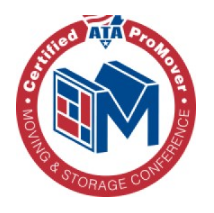What to Keep Track of When Planning an Interstate Move: A Guide

An interstate relocation requires careful planning. This is to prepare you for unexpected circumstances and help you AVOID UNNECESSARY DELAYS as you move from one state to another.
To save you from trouble, we’ll share essential tips every first-time mover should know. We’ll help you select the best moving company, budget your finances, sort and pack your belongings, adjust to your new community, calculate moving costs, and more!
Ready to pack your essentials bag and get going? Keep reading to make your interstate move a breeze.
Planning an Interstate Move: A Comprehensive Guide

Professional movers like us believe it pays to plan ahead of time. We suggest blueprinting and making an inventory of all your household items MONTHS BEFORE relocating to your new address.
Some people encounter issues we don’t want you to experience. To simplify your moving process, we’ll give you a moving to-do list to guide you on your interstate move.
Setting a Realistic Timeline
Setting a realistic timeline is one of the crucial components of careful planning. It gives you enough time to think and decide and helps you avoid the last-minute rush as you inch closer to your moving date.
In making your interstate moving timeline, you must consider the following:
- the number of belongings you own
- upcoming family activities
- the time needed to accomplish different tasks
- distribution of tasks among family members or helpers (if any)
Always remember to give yourself enough time before loading. Make sure to think things through before making your next move.
You can also SAVE MONEY by giving yourself time to find cost-cutting measures and stay within your moving budget. You can book the services of experienced movers and reliable moving companies months in advance. This will be cheaper than booking a few weeks leading up to your move-out date.
Creating a Moving Budget

Creating your moving budget is one of the most critical parts of planning interstate moves, as it helps you save money and reduce pressure and stress. Keep track of your possible expenses through the pen-and-paper method, budgeting applications, or jotting them down on a spreadsheet.
Canvas and compare prices for professional moving services, the cost of packing supplies, truck rentals for DIY interstate moving, and other possible charges while preparing important documents and payments for fees.
Understanding interstate moving costs will give you an overview of the probable and unexpected expenses you may encounter. In turn, you can allocate enough funds to finance your long-distance move. Set your maximum budget and look for cost-effective options to stay within your spending plan.
IMPORTANT REMINDER: Consider the month you’re planning a cross-country move. People tend to pay more during peak seasons.
Researching and Selecting a Moving Company
While going the DIY route is cheaper, it might be more stressful, considering you must plan and move independently. You must also be vigilant and protect any fragile or sentimental items. Moving companies are experienced in moving cross-country, enabling them to do things QUICKLY and EFFICIENTLY.
We highly suggest hiring professional movers for a hassle-free long-distance move, especially for first-timers and busy bees.
Consult your real estate agent if you don’t know where to look for an excellent moving company. Real estate agents work directly with expert movers, and they’re already acquainted with their backgrounds. You can also rely on customer feedback and Yelp reviews to better understand how the company deals with its clients and whether they offer excellent customer service.
Comparing Quotes and Services
You must also look for RELIABLE and COST-EFFECTIVE moving companies that offer services within your area. Compare one with another to get the best prices for your target moving day. You should preferably compare prices and services from MULTIPLE interstate moving companies.
Ask for a free quote and services offered from each interstate mover and compile them in one spreadsheet to make it easier to sort out which ones can tender good deals — from price to services. Select the moving company with the best offer to get your money’s worth.
Assessing Insurance and Liability Coverage
It’s also best to research the insurance plan for the moving services you’ve considered acquiring. Inquire about their special coverage or full-value protection on high-value items or those with sentimental importance. This guarantees that the company will cover LIABILITIES and DAMAGES on household goods while packing, during transit, and off-loading, taking the risk off your shoulders.
Before packing, it’s highly recommended to take photos or videos of the items for proof.
Sorting and Packing Belongings
If you own loads of household items, sorting them into assigned categories is essential. You can separate fragile items from non-fragile items or goods found in specific areas of your home. This way, you can easily segregate and unpack your items at your new house.
Sorting your items based on which ones you want to keep and discard also works. If you’re planning to sell or donate some, identifying the belongings you wish to let go of will be easier.
Decluttering and Donating Unnecessary Items
Decluttering your possessions should be the FIRST THING you do before you start packing. You need to identify bulky items (spare refrigerator, old sofa, etc.) or those that would cost a lot to move and insure.
Decluttering and donating unnecessary items can also help minimize moving expenses and save space in the truck. Some families decide to sell or donate heavier or more expensive items they think would be difficult to move and replace them when they settle at their new location.
Packing Strategies and Materials
It’s also important to prioritize the safety and longevity of your belongings, especially while they’re in transit, since it will be a long drive when moving to a new state. You must properly pack your items with good quality packing supplies such as bubble wrap, moving boxes, and packing paper and secure them using packing tape.
Make sure to use the APPROPRIATE packing materials for each item. Enclosing them with bubble wrap and filling the boxes with packing peanuts to avoid breakage is best for glassware and other fragile items.
Another packing strategy for a smooth move is labeling your boxes. Include information like the name of the content, the room the items belong in, and priority when unpacking.You should also put fragile stickers on boxes containing breakable goods so the movers know to handle them with care.
Addressing Utilities and Postal Services
You don’t want to get stuck paying bills intended for your old address, so it’s important to inform your utility providers and post office. Cancel any transactions with your current utility providers and set up new ones in your new address before moving day. Utilities (water, electricity, gas, internet, etc.) are usually area-specific.
So, your current subscription might NOT WORK at your new location. Hence, it’s better to check with your real estate agent or soon-to-be landlord about the recommended utility services in the area.You must also inform the US post office that you’ll be changing your address before moving so your mail gets forwarded to the right home. Similarly, you must do the same with insurance providers, loan providers, and credit card company.
Updating Personal Identification Documents
You need to update your personal identification documents, specifically by adding your new address, to avoid confusion or legal issues. You must also change relevant details on your driver’s license, voter’s registration card, and similar credentials as you move to a new city and cross state lines.
Additionally, you must revise the details in your subscription services, specifically those that use your home address for billing purposes. If you need to change your information with multiple companies and organizations to a new address, you can avail of mail forwarding services one week before moving day.
Preparing for Life in a New State
A new state means living in a different neighborhood and gaining new friends. Preparing for a new life in another location will be different depending on whether you’ll live alone or with your family and pets. Hence, preparing for life in the state you’ll be relocating to before leaving is important. You can do this by taking note of several tips for moving interstate with pets and your loved ones, as well as if you’re living alone.
You can start by researching your target state and city — the amenities near your new home, average living expenses, and the local culture and customs, among others. This way, you can prepare for possible lifestyle changes you’ll need to make once you move in.
Finding a New Home
Finding a new home is a CHALLENGING TASK, especially if you can’t go house or apartment hunting in person. We highly recommend working with a reputable local agent to find good options and avoid rental scams. You must compare homes based on your budget, distance from schools and your workplace, transportation, and other amenities available.
Job and School Transfers
If you or a family member is still in school, you must transfer their credentials to the new school where they will enroll. It’s best to research what facilities and programs are available beforehand to find good schools in the area.
If you’re interviewing for a job, on the other hand, try to ask your employer about MOVING BENEFITS, such as temporary storage, housing, and real estate agent services they can offer to their employees.
Familiarizing Yourself with the New Environment
Familiarizing yourself with your new location is a good thing to do throughout your entire move. If you can, visit your new city and stroll around. If not, you can always go for a virtual walkthrough using your online map’s street view.
Researching the background of your target state is another way to get a feel for your new home.
Evaluating Transportation Options for the Move
There are many transportation options you can consider for long-distance moving. You can use your car, rent moving containers or trucks, or hire professional movers from a reputable moving company.
Whichever transport option you choose, it’s important to consider key factors affecting your interstate moves. You must assess your transportation choices based on your moving budget, timeline, furniture and vehicle size, and the effort you must expend on long-distance or local moves.
Hiring Professional Movers
If you don’t want to go the DIY route, hire professional movers from HIGHLY-REVIEWED moving companies. They can make moving a breeze since they’ll help pack, load, and offload your items.
It can take a sizable chunk of your budget, but note that you’re paying for labor, packing materials, and insurance, especially high-value items.
Using Personal Vehicles
Consider DIY if hiring a professional is incompatible with your moving checklist. Ask your friends and family’s help to pack your stuff to move things quickly. You can rent a moving truck or containers and drive them across the state.
This could be stressful as you need to do most of the planning and moving BY YOURSELF. You should also be vigilant with the items when in transit. You must ensure they’re properly packed to avoid potential damage to your belongings.
Frequently Asked Questions
Want to know more about interstate moving? Read on!
What Are the Average Costs for an Interstate Move?
Interstate moves usually cost around $4,000 to $10,000, depending on the distance, number of belongings, and premium services you choose to avail with the moving company. DIY options, on the other hand, are relatively cheaper. Renting a moving truck would cost around $1,700, while containers can cost over $2,200.
How Long Should I Plan for an Interstate Move?
Planning ahead, around two months prior, gives you enough time to curate your moving checklist and organize things that should be done. It also provides a buffer to prepare for unexpected costs and circumstances.
What Are Some Common Mistakes to Avoid When Planning an Interstate Move?
A few mistakes you MUST AVOID are:
- not planning beforehand
- being organized
- hiring unreliable movers
- underestimating the time needed to pack your belongings
- not utilizing good packing strategies
- not setting up utilities, such as postal service (local US post office), water, electricity, and gas
- not informing your credit card company, insurance providers, the post office, and other companies that make use of your address
Can I Move My Car During an Interstate Move, and How?
It’s possible to bring your car with you on an interstate move. However, you must get a new driver’s license and update your vehicle registration at your new state’s DMV. Aside from your driver’s license and car registration, car insurance should also be considered, as rates differ from one state to another.
How Can I Best Acclimate Myself and My Family to Our New State?
It can be challenging to move to another state, especially when you’re uprooting your family.
Before the movers arrive, we suggest you research the new state you’ll be moving to and start familiarizing yourselves with the neighborhood. Once you move in, start unpacking your belongings and make your new place a home. It also helps to explore the area on foot and make new friends at your new job and with your neighbors.
Conclusion
Interstate moving is not as easy as packing your stuff and driving away. It needs careful planning and decision-making to minimize unnecessary delays and payments.
When planning an interstate move, it’s always important to set a realistic timeline, create a spending plan, and research the moving company you’ll hire. It’s also important to utilize good packing strategies when going the DIY route. You should also take care of your existing subscriptions and utilities and update them before taking your essentials bag to another state.
On top of that, make your new state home and enjoy exploring the rest of the neighborhood once you finally move in.
Related Articles
Moving Out Soon? Your Guide to Start Saving Today

Moving out is a thrilling milestone that brings both excitement and financial challenges. Proper preparation and strategic saving are crucial for a smooth transition to independent living, requiring more than just accumulating a lump sum. Beginning this process requires a thorough approach, from evaluating your current financial circumstances to preparing for lasting stability. By implementing […]
Read MoreFirst Time Moving Out? Your Essential Checklist & Guide

Stepping out on your own for the first time is a thrilling adventure that marks the beginning of true independence. It’s a journey filled with excitement, but it also comes with its fair share of challenges that require thoughtful preparation and planning. Moving from your family home to your own space involves more than just […]
Read More




